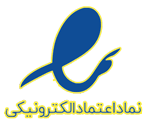فهرست مطالب
Cover\nHalf Title\nTitle Page\nCopyright Page\nTable of Contents\nForeword\nPreface\nAbstract\nAcknowledgments\nAuthors\n1 Introduction\n 1.1 Overview of Integrated Water Environment Treatment\n 1.2 Necessity of Integrated Water Environment Treatment\n 1.2.1 Current Situation of Water Environment\n 1.2.2 Hazards of Water Environment Pollution\n 1.2.3 Development Prospect of Integrated Treatment\n 1.3 Typical Mountainous City in Three Gorges Reservoir Region\n 1.3.1 Three Gorges Reservoir Region\n 1.3.2 Mountainous City\n 1.3.3 Chongqing—City of Mountains\n 1.4 Integrated Basin Treatment\n 1.4.1 Overview of Integrated Basin Treatment\n 1.4.2 Significance of Integrated Basin Water Environment Treatment\n 1.4.3 Characteristics of Integrated Treatment of Mountainous Basin\n2 Situation before Integrated Water Environment Treatment in Chongqing Basin\n 2.1 Overview of the Basin in Three Gorges Reservoir Region\n 2.1.1 Distribution of Water Resources in the Basin\n 2.1.2 Analysis on Water Quality in the Basin\n 2.1.3 Current Situation of Water Resources Utilization\n 2.2 Water Environment Problems and Impacts in the Basin\n 2.2.1 Water Ecology Problem\n 2.2.2 Water Pollution Problem\n 2.2.3 Water Safety Problems\n 2.3 Cause Analysis of Impacts on Basin Water Environment\n 2.3.1 Mixing of Rain and Sewage\n 2.3.2 Drainage Network Construction and Sewage Treatment\n3 Integrated Treatment Strategy\n 3.1 Coordinated Treatment of Whole Basin\n 3.1.1 Integrated Water Environment Treatment of Whole Basin\n 3.1.2 Control of Combined System Over Flow pollution\n 3.1.3 Prevention and Control of Basin Water Pollution\n 3.2 Improvement of Stormwater and Sewage Treatment Patterns In Mountainous Cities\n 3.2.1 Decentralized Treatment Pattern\n 3.2.2 Scientific Stormwater Management\n 3.2.3 Sewage Treatment Measures\n 3.3 Establishment of Reclaimed Water Standards\n 3.4 Collaboration among Multiple Departments and Consideration to Multiple Functions\n 3.5 Whole-Process Close Combination\n 3.6 Establishment of Third-Party Evaluation Mechanism\n4 Typical Measures for Integrated Treatment\n 4.1 Source Treatment Measures\n 4.1.1 Permeable Pavement\n 4.1.2 Stormwater Management and Utilization Measures\n 4.1.3 Bio-Retention Measures\n 4.2 Water Treatment Measures\n 4.2.1 Endogenous Pollution Treatment Measures\n 4.2.2 Environmental Dredging Of Sediments\n 4.2.3 Disposal and Reutilization of Sediments and Residual Water\n 4.2.4 Water Circulating Measures\n 4.2.5 Artificial Oxygenic Aeration Technology\n 4.3 Countermeasures for Integrated Water Environment Treatment\n 4.3.1 Countermeasures for Black and Odorous Water Treatment\n 4.3.2 Improvement of Management Mechanism\n 4.3.3 Increase Public Engagement\n5 Practice of Source Treatment\n 5.1 Planning and Implementation of Sponge City\n 5.1.1 Significance of Sponge City\n 5.1.2 Planning and Implementation of Sponge Measures\n 5.2 Special Planning For Sponge City in Chongqing Main Urban Area\n 5.2.1 Analysis on Problems and Demands\n 5.2.2 Sponge Space Pattern Building and Function Zoning\n 5.2.3 Short-Term Construction Planning Ideas\n 5.3 Sponge Community Construction\n 5.3.1 Technical Measures For Sponge Community Construction\n 5.3.2 Adjust Measures to Local Conditions, Collect Water in High Places for Use in Low Places\n 5.3.3 Spot Purification and Utilization\n 5.4 Sponge Park Construction\n 5.4.1 Project Overview\n 5.4.2 Design Concept\n 5.4.3 Technical Measures\n 5.4.4 Benefit Evaluation\n6 Practice of Integrated Water Environment Treatment\n 6.1 Overview of Environment in the Panxi River Basin\n 6.1.1 Meteorological Information of the Basin\n 6.1.2 Renovation Works Before Systematic Integrated Treatment\n 6.1.3 Water Environment before Systematic Integrated Treatment\n 6.2 Background Investigation and Main Problems of Pollution in the Panxi River Basin\n 6.2.1 Pollution Source Investigation\n 6.2.2 Analysis on Characteristics of Pollution Sources in the Panxi River Basin\n 6.2.3 Water Environment Problems in the Panxi River Basin and the Cause Analysis\n 6.3 Practice of Regional Water Environment Treatment\n 6.3.1 Treatment Idea\n 6.3.2 Environmental Capacity and Reduction Target\n 6.3.3 Treatment Scheme\n 6.4 Evaluation on Regional Water Environment Effects\n7 Epidemic Prevention And Control Measures For Urban Drainage Systems in Mountainous Regions\n 7.1 General Protective Measures for Field Operating Personnel\n 7.1.1 General Provisions\n 7.1.2 Protection of Production Personnel\n 7.2 Management and Control Measures For Urban Drainage Systems\n 7.2.1 General Provisions\n 7.2.2 Drainage Sources\n 7.2.3 Drainage Pipes and Channels\n 7.2.4 Pump Stations\n 7.2.5 Sewage Treatment Plants\n 7.2.6 Reclaimed Water Reuse Facilities\n 7.3 Guarantee Measures\n 7.3.1 Strengthen Organizational Guarantee\n 7.3.2 Ensure Material Supply\n 7.3.3 Intensify Anti-Epidemic Management\n 7.3.4 Enhance Publicity and Education\n8 Results and Prospects\n 8.1 Results\n 8.1.1 Speeding Up Water Ecological Civilization Construction\n 8.1.2 Significantly Improving Ecological Environments of Rivers and Lakes\n 8.2 Prospects\n 8.2.1 Guiding Ideology\n 8.2.2 Basic Principles\n 8.2.3 Goals and Conclusions\n 8.2.4 Construction of “Four Banks of Two Rivers”\n 8.2.5 Construction of “Lucid Water and Green Banks”\n 8.3 Guarantee Measures\n 8.3.1 Transforming Management Functions of Government Sectors\n 8.3.2 Promoting Development of Social Organizations\n 8.3.3 Improving Fund Management Mechanism\nBibliography\nIndex
